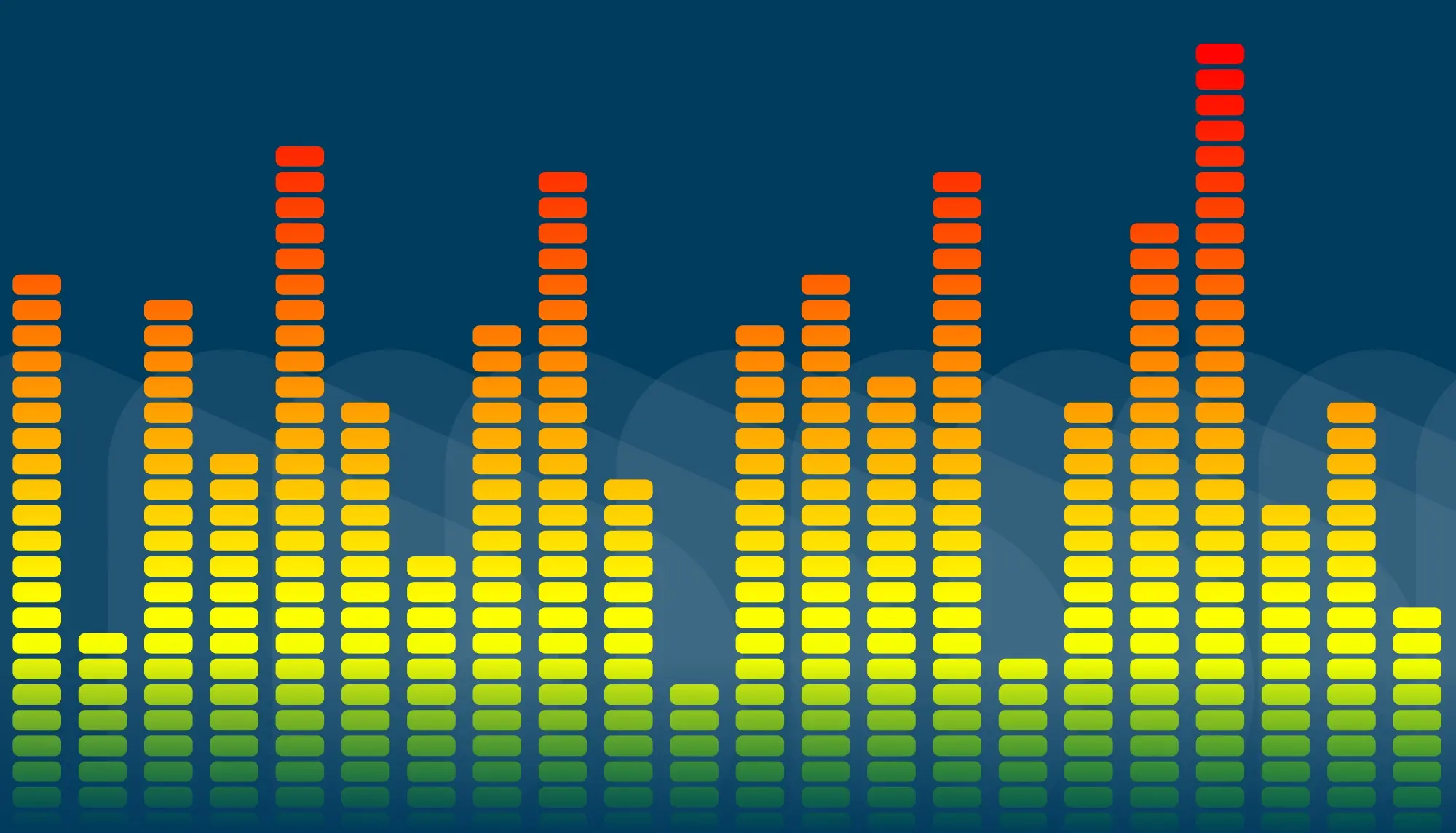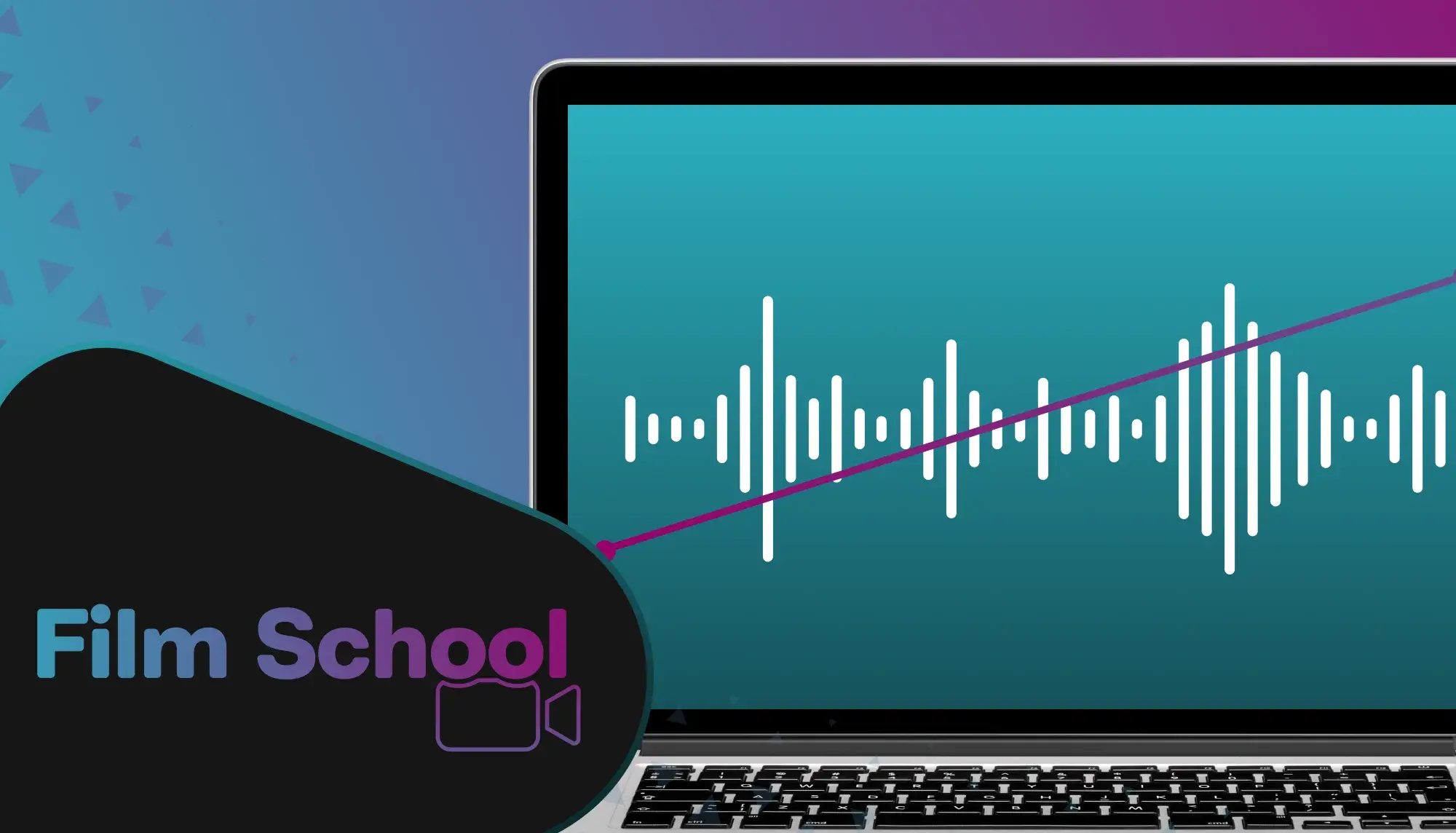
Sound design in film goes beyond cool soundtracks; it also foreshadows what's coming next, adds emotion, and enhances a movie's tone. Remember the "Jurassic Park" scene where the main characters get stuck on the jeep tour?
The characters sit in silence. Faint pounding sounds in the distance emerge that only the audience hears.
The sounds grow louder, causing a glass of water to shake on the vehicle's dashboard.
The driver notices the ripples in the water.
By the time the characters realize what's happening, the gigantic T-Rex appears.
Its bone-chilling, high-pitched roar is unleashed!
(Fun fact: the T-Rex sound was made using the roar of a baby elephant, the growling of a tiger and alligator, and the sound of a whale blow.)
This brilliant and terrifying scene showcases two primary types of sound design used in the film — diegetic and non-diegetic. Knowing the differences between these two terms should be integral to your film or video creation toolkit. In this article, we unpack what you need to know about each style, including:
- the definitions of each type
- their most common applications in film
- how you can use each type of sound to tell better stories
Let's get started.
What is diegetic sound?
Before diving into this topic, let's briefly touch upon the idea of sound. What does it really do? If you read/watch any film or media course, it’s often said that sound:
- creates immersive film worlds
- shapes our understanding of images
- engages our senses
- calls our attention to details
With this understanding, it's easy to see why the Academy Awards offers so many gold statues for sound design. However, even with all the different ways it adds magic to film, sound can be narrowed down to two basic types: diegetic and non-diegetic.
In the film world, diegetic comes from the Greek word "diegesis," which refers to the world of the film and everything in it. This definition may sound overwhelming, but it's pretty simple. If the characters can hear it, even in their head (thoughts), it's diegetic sound. It can come either from on-screen or off-screen, but it always happens at the same time that the action takes place.
Diegetic sound can include on-screen dialogue or conversations alongside off-screen audio like:
- music: ambient elevator music, street buskers strumming guitar
- object sounds: raindrops, explosions, birds chirping
- audible movements: the footsteps of someone walking
Examples of diegetic sound in film
Diegetic music
When characters in the film can hear the music the audience hears, that music is diegetic. Examples can be music from a car radio or a character playing a guitar. A stellar illustration of diegetic music is in "Baby Driver."
Video via Scene City
In the opening scene, the character Baby (Ansel Elgort) relies on the beat of his personal soundtrack to drive the bank robbers away from the heist and evade the police. The music is his lifeline and becomes a character in and of itself throughout the film. If you want to do a deep dive into diegetic music, this movie is a masterclass in sound design.
Diegetic sound effects
Although diegetic sound naturally occurs within the story's world, sound designers often need to improve or enhance object sounds in post-production to really drive a scene home.
The clip below from "North by Northwest," by Alfred Hitchcock, is an excellent example of using diegetic sound effects to build tension. The audience and the main character, Roger, hear the plane humming as it soars overhead. The humming becomes louder as the plane zooms at Roger.
Video via Movieclips
Hitchcock was a genius at creating suspense through sound. His 1963 movie, "The Birds," uses diegetic sound to capture the terror of the deadly birds. This clip shows school children and their teacher running from the winged creatures. The high-pitched screeching noises are jarring and add even more tension to the already chaotic scene.
Video via Movieclips
How to enhance film or video with diegetic sound
.webp?width=600&height=400&name=Image%201%20(7).webp)
Depending on the project, diegetic sound adds realism and feeling to your content. For example, introducing fun audio effects or clips during post-production can inject comedy into a mundane video.
However, making sure any kind of audio (sound effects, dialogue, etc) works well is important, whether it's a short film or marketing video.
Here are five tips to get you started.
1. Pay attention to audio levels
Audio, too loud or quiet, can distract viewers from the video or film's overall tone and message. This is where audio editing really matters. Depending on the audio source, most microphones record audio at different levels.
Audio levels should stay relatively close to each other to make a video feel natural. Using an online video editor like WeVideo can help adjust these levels, including:
- modifying the audio of an entire track
- adjusting the audio of a single video
- scrubbing the audio altogether
2. Check your recording environment
How are the acoustics of your location? Strive for environments that complement the desired sound. For example, rooms with minimal echo are best for indoor dialogue or conversations.
3. Reduce background noise
If your environment is not ideal and you encounter a fan's hum or the clanking of glasses at a restaurant, you’ll need to adjust your audio. The good news? WeVideo comes with an automatic background noise reduction tool — super handy when inconvenient sounds pop up in your recording. (And more good news? Getting started with WeVideo is as easy as signing up for a free account!)
4. Add in fades
Fades are a video editing effect that works well for audio. The fade's purpose is to slowly raise or lower a video's volume. It also works great when combined with a video transition.
5. Use stock audio clips
What happens when you need audio for a video or film scene? Try using stock audio clips. For example, WeVideo offers audio files that are separated into categories. This makes it easy to preview them and decide whether they fit your work's tone before dragging them down into the timeline.
What is non-diegetic sound?
Non-diegetic sound is everything the characters cannot hear, but the audience can. Think of it as an invisible conductor guiding the audience's emotional response throughout the story. Examples of non-diegetic sound include:
- sound effects (as long as they're not audible to the film's characters)
- forms of narration (voiceover)
- a musical score
Non-diegetic sound effects and film scores are used strategically to intensify suspense or emphasize moods within various scenarios. For example, soundtracks like those found in "The Lord of the Rings" heighten actions on screen while infusing scenes with emotion reflective of Middle Earth's surreal landscape and Frodo Baggins' journey.
Other examples of non-diegetic sound are voiceovers or narrations. This element allows audiences a peek into the characters' minds for additional context, as seen in films like "Fight Club" or "The Shawshank Redemption." This technique is great for revealing the character's thoughts and motives without saying them out loud.
The art of trans-diegetic sound
When a film merges diegetic and non-diegetic sound, it becomes trans-diegetic. This form of sound may start from music playing on a character's radio before morphing into the movie's score. This movement avoids any disruption for the audience and promotes harmony throughout the story's progression.
Examples of non-diegetic and trans-diegetic sound in film
Non-diegetic sound effects
In the film "Inception," the strategic use of non-diegetic sound intertwines with the storyline to muddy the distinction between dreams and waking life. Sounds like footsteps in corridors or the roar of an approaching train help distinguish different levels within the dream world, as seen in the clip below.
Video via FinalDestination4180
Non-diegetic soundtrack
The film "Interstellar" has an iconic musical score (by composer Hans Zimmer — who just so happened to do the score for "Inception" too!) that takes the viewer on a deeply emotional journey. In the famous "corn field chase" clip below, Zimmer's music mimics the constant ticking of a clock with repeated notes, adding more intensity to what unfolds.
Video via Jay M
How to enhance film or video with non-diegetic sound
Non-diegetic sounds can subtly or dramatically influence the viewer's emotional landscape, deepening their engagement with the narrative. So, what sounds can you add to your video or film?
Here are a few tips to get you started.
Use music and sound effects
Whether creating a short film or a marketing video, strategic placement of music or sound effects can boost the impact of your project. But where can you find the right music or sound effects? Sign up for a free WeVideo account and use music and sound effects directly from the WeVideo library.
Once you have access to music and sound effects, here are a few things to consider:
- When adding music, consider the genre and style that will work best for the scene or video clip. A mismatched style can distract from the narrative flow.
- Remember to adjust the sound volume when working with sound effects to ensure they do not detract from the dialogue or essential diegetic sounds.
Add narration or voice overs
Listen for any echoes in the room before you record a voice over or narrate a scene. Your microphone will amplify the delay, even if it's a slight echo. Also, be wary of using Airpods; some users have noticed interference.
Try to find a room with a lot of padded/covered furniture and rugs (acts as soundproofing) and avoid windows or street noise. Or, buy sound panels (most are relatively cheap) that can be attached to walls; even a few will make a difference. On a budget? Closets can be your best friend when recording voice overs!
Some final thoughts
From the diegetic and non-diegetic sounds that root us in a film's journey and stir our emotions to the trans-diegetic mix of both worlds, these sound design elements are as essential to storytelling as the script itself.
Knowing the differences between these terms and how to use them in your digital story should be integral to your content creation toolkit. Whether you’re a novice filmmaker or just want to start making videos for fun, you can use each type of sound to captivate your audience and tell exceptional stories.



